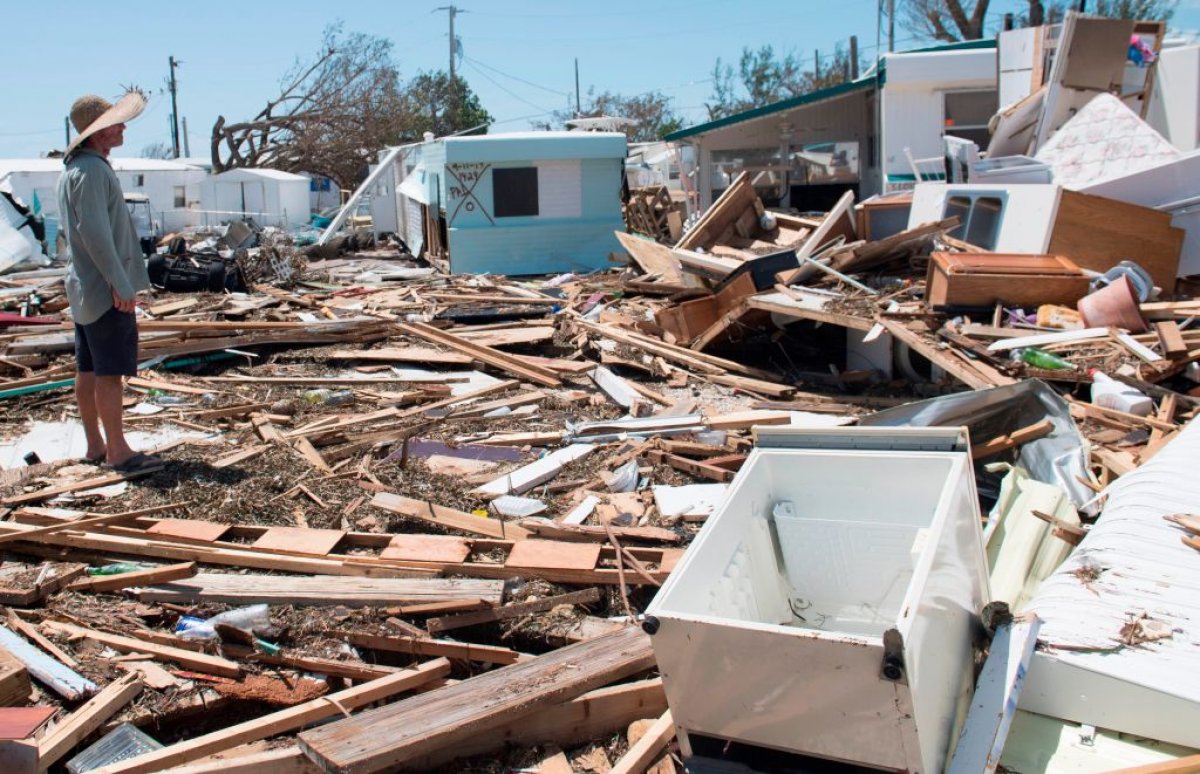At the United Nations Climate Change Conference (COP26) this month, communities on the front lines of climate change shared how they are being impacted by rising sea levels and extreme weather events. While the push for global action to reduce emissions continues, disaster-prone communities face an expensive decision: Should they spend money on adaptations like seawalls, stilts, storm drains and windproof garage doors to better withstand climate change?
These are the kinds of questions I study as an assistant professor of economics at Arizona State University. There is evidence that preparing for storms can be a wise investment that is less expensive than rebuilding. My research estimated that we have approximately $800 billion worth of storm adaptation infrastructure already in place in the U.S. Assuming incentives for adaptation grow over time to mirror escalating climate threats, adaptation would cut expected storm damage by a third by the end of the century. The overall result, after subtracting out the price of the adaptations, would be an 11 percent reduction in storm-related costs caused by climate change, compared to doing nothing and simply paying to rebuild after each storm.
Other evidence supports the idea that adaptation is a cost-effective way to substantially reduce climate-driven storm damage. After Hurricane Katrina, New Orleans invested $14.6 billion in adaptations to better withstand future storms, including a 133-mile system of levees, floodwalls, pumping stations and surge barriers. When Hurricane Ida ripped through the city in August, the protective systems seem to have largely done their job, with early estimates suggesting that damages would be less than a third of those caused by Katrina.
In Florida, stricter building codes implemented in 2002 require adaptations like impact-resistant windows and stronger roofs. Research shows that these changes have reduced storm damages by $4.80 for every $1 spent. Internationally, a report by the Global Commission on Adaptation argued that "investing $1.8 trillion globally in five areas from 2020 to 2030 could generate $7.1 trillion in total net benefits."
Actions that are in the best interests of society may not make financial sense for individuals, and this is where the story gets more complicated. The willingness of businesses, homeowners, municipalities and others to invest in adaptation is influenced by the federal government's support for both storm damage prevention and clean-up.
FEMA currently provides nearly $8 billion in storm-related disaster relief each year. While disaster aid plays an invaluable role in reducing human suffering and helping communities get back on track, it can have unintended consequences. Because adaptation is a major upfront expense to protect against an event that may not happen, businesses, individuals and even cities may hesitate to spend finite resources on it if they know the federal government will ultimately step in and foot the bill when there is a disaster.

When I modeled this effect in the U.S., I found that existing levels of disaster aid would reduce spending on adaptation enough to cause an additional $3.2 billion in storm damage each year—were it not for a different set of government spending.
The federal government also provides subsidies for households, businesses and municipalities to do adaptation, which counterbalance the disincentives created by disaster relief aid. For example, FEMA's Hazard Mitigation Grant Program (HMGP) offers roughly $700 million a year in adaptation grants, an amount that President Joe Biden recently pledged to increase. My research found that these subsidies more than make up for the disincentive that comes from having federal aid to fall back on in the event of a disaster.
There is room for improvement. We can encourage more adaptation by shaping subsidy policies to support the groups that are least likely to adapt on their own. Many low-income households simply cannot afford the necessary adaptations, even if they would save money in the long run. Owners of rental properties may not be incentivized to invest in prevention, viewing storm damages as an acceptable business loss rather than the much more personal price faced by those who live in a home.
Storms alone cause roughly $54 billion worth of damage in the U.S. each year and that number will only rise as climate change accelerates. Adaptation can substantially reduce this damage and the overall cost of storms to society. Federal government subsidies are important for encouraging investment in adaptation to counteract the disincentives created by disaster aid.
My research also showed the limits of what adaptation can do. Adaptation can reduce our overall financial losses from storms by 11 percent, but that's far from 100 percent—and it does not include the intangible human harms of climate-driven disasters. Adaptation spending also has diminishing returns and some level of damage from escalating storm events becomes unavoidable.
Investing in adaptation is a critical part of any climate strategy, but we can't simply adapt our way out of climate change. An overarching climate plan that curbs emissions is also very much needed.
Stephie Fried is an environmental economist and an assistant professor of economics at Arizona State University's W.P. Carey School of Business, as well as a senior economist at the Federal Reserve Bank of San Francisco (currently on leave).
The views expressed in this article are the writer's own.
Uncommon Knowledge
Newsweek is committed to challenging conventional wisdom and finding connections in the search for common ground.
Newsweek is committed to challenging conventional wisdom and finding connections in the search for common ground.
About the writer
To read how Newsweek uses AI as a newsroom tool, Click here.








